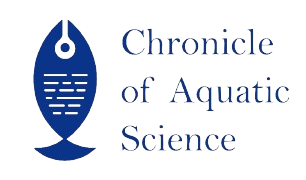| File | Action |
|---|---|
| CoAS_V1IS6_05 | Download |
- 919088951040 call us
- chronicleofaquaticscience@gmail.com Mail us
CoAS_V1IS6_05
Mini-review
Minireview on Addressing the Effects of Non-Point Source (NPS) Pollution in Aquatic Ecosystem
Khwabi Koreti*, Narsingh Kashyap, Ram Kumar Kurmi, Niranjan Sarang
Abstract
Pollution from non-point sources is a much bigger issue. When water from rain, snow, or irrigation flows over or through the ground, picking up pollutants along the way, it causes them to end up in bodies of water. Therefore, the goal of this study is to present some best management practices for addressing the issue as well as a complete analysis of the primary effects of NPS pollution on aquatic ecosystems. For the purposes of making this study thorough, data on chemical usages in fisheries and aquaculture around the world were gathered from 82 research articles and they were then grouped, analyzed, and summarized in accordance with the study's objectives. In the study, the primary sources of NPS pollution load and their consequences on the water quality of water bodies were reviewed, together with the volume of agricultural runoff and rainfall-runoff. Numerous studies have demonstrated that fertilizers, pesticides, and agricultural runoff can bio-accumulate in the tissues of aquatic animals and endanger the safety of food. Public knowledge of source reduction should be encouraged, and related regulations should be put into place, in order to further reduce the NPS pollution load and maintain a pollution-free environment.
Keywords
Nonpoint source pollution, rain water runoff, agricultural runoff, modeling, and best management practices.
References
Barden, J. B.; Shortle, J. S. (2014). Agricultural Sources of Water Pollution. In Environment, 3, 81– 85.
Bridges, O. (1992). A comparison in water quality: the UK and the CIS. Environmentalist, 12(4), 255- 260.
Clark, E. H., Haverkamp, J. A., & Chapman, W. (1985). Eroding soils. The offfarm impacts. Conservation Foundation.
Ippolito, A., Kattwinkel, M., Rasmussen, J. J., Schäfer, R. B., Fornaroli, R., & Liess, M. (2015). Modeling global distribution of agricultural insecticides in surface waters. Environmental Pollution, 198, 54-60. Johnes, P. J. (1996). Evaluation and management of the impact of land use change on the nitrogen and phosphorus load delivered to surface waters: the export coefficient modelling approach. Journal of hydrology, 183(3-4), 323-349. Krysanova, V., Müller-Wohlfeil, D. I., & Becker, A. (1998). Development and test of a spatially distributed hydrological/water quality model for mesoscale watersheds. Ecological modelling, 106(2-3), 261-289. León, L. F., Lam, D. C., Swayne, D. A., Farquhar, G. J., & Soulis, E. D. (2000). Integration of a nonpoint source pollution model with a decision support system. Environmental Modelling & Software, 15(3), 249-255.
Leon, L. F., Soulis, E. D., Kouwen, N., & Farquhar, G. J. (2001). Nonpoint source pollution: a distributed water quality modeling approach. Water Research, 35(4), 997-1007. Duda, A. M. (1993). Addressing nonpoint sources of water pollution must become an international priority. Water Science and Technology, 28(3-5), 1-11. Novotny, V. (1999). Diffuse pollution from agriculture—a worldwide outlook. Water science and technology, 39(3), 1-13. Ojiako, G. U. (1988). A study of pollutional effects of irrigation drainage on Anambra River quality and fishing. Water international, 13(2), 66-73. Pitt, R., & Amy, G. (1973). Toxic materials analysis of street surface contaminants (Vol. 73, No. 283). US Government Printing Office. Poch-Massegú, R., Jiménez-Martínez, J., Wallis, K. J., de Cartagena, F. R., & Candela, L. (2014). Irrigation return flow and nitrate leaching under different crops and irrigation methods in Western Mediterranean weather conditions. Agricultural Water Management, 134, 1-13. Sartor, J. D., Boyd, G. B., and Acardy, F. J. (1974). "Water Pollution Aspects of Street Surface Contaminants," Jour. Water Poll. Control Fed., 46. Viney, N. R., Sivapalan, M., & Deeley, D. (2000). A conceptual model of nutrient mobilisation and transport applicable at large catchment scales. Journal of Hydrology, 240(1- 2), 23-44. Wallace, D. A., & Dague, R. R. (1973). Modeling of land runoff effects on dissolved oxygen. Journal (Water Pollution Control Federation), 1795- 1809. World Bank. (1992). Development and The Environment, World Development Report 1992. Washington. Worrall, F., & Burt, T. P. (1999). The impact of land-use change on water quality at the catchment scale: the use of export coefficient and structural models. Journal of Hydrology, 221(1-2), 75-90.
- Published online
- 27th November, 2023
How to Cite the Article
Koreti, K., Kashyap, N., Kurmi, R. K. and Sarang, N. 2023. Minireview on Addressing the Effects of Non-Point Source (NPS) Pollution in Aquatic Ecosystem. Chronicle of Aquatic Science 1(6): 55-60.
Copyright
This is an open-access article distributed under the terms of the Creative Commons Attribution License (CC BY). The use, distribution or reproduction in other forums is permitted, provided the original author(s) and the copyright owner(s) are credited and that the original publication in this journal is cited, in accordance with accepted academic practice. No use, distribution or reproduction is permitted which does not comply with these terms.

CoAS_V1IS6_05


